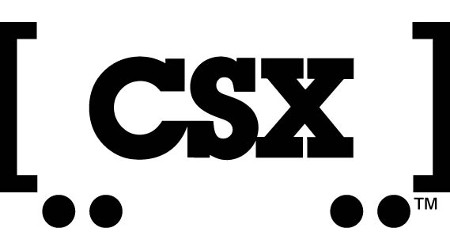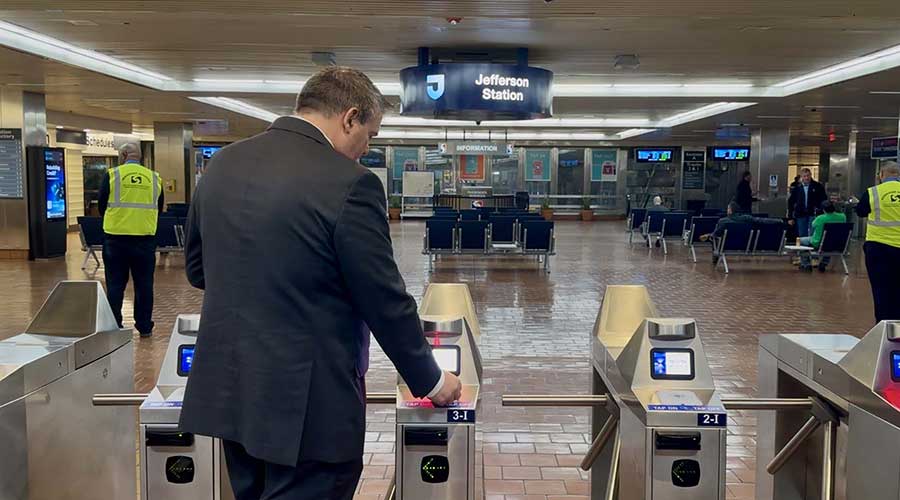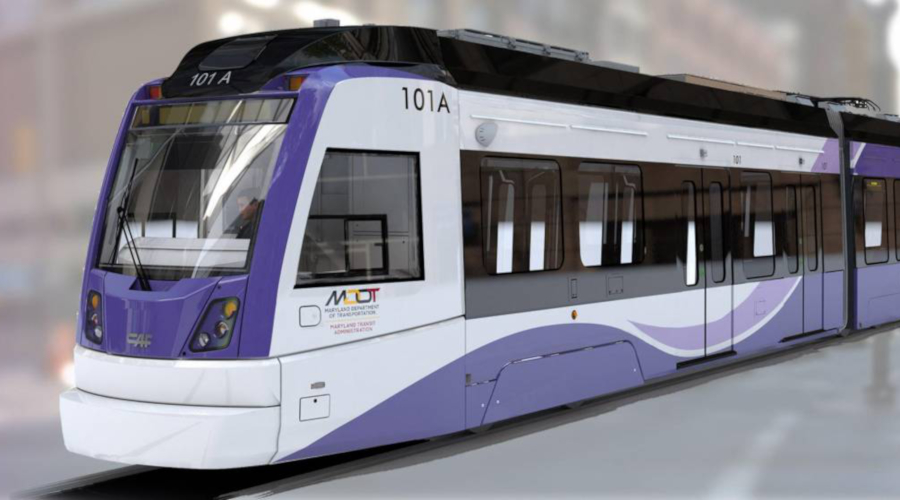Stay updated on news, articles and information for the rail industry
 railPrime
railPrime
5/1/2015
Rail News: Mechanical
USDOT releases final rule on crude-by-rail safety, joins Transport Canada in introducing new tank-car class
By Jeff Stagl, Managing Editor
The day that railroads, tank-car builders and lessors, shippers, refiners and other crude-oil supply-chain constituents long have been waiting for has arrived. Today, the U.S Department of Transportation (USDOT) released its final safety rule governing the transportation of flammable liquids by rail, primarily crude and ethanol.
The USDOT and Transport Canada held a press conference this morning to unveil a new class of tank car for flammable liquids. During the conference, U.S. Transportation Secretary Anthony Foxx shared some details about the final safety rule while Canadian Transport Minister Lisa Raitt talked about the importance of the two nations jointly strengthening tank-car standards.
Developed by the Pipeline and Hazardous Materials Safety Administration and Federal Railroad Administration in coordination with Canada, the USDOT's final rule focuses on safety improvements designed to prevent crude-by-rail accidents, mitigate consequences if an accident occurs and support emergency-response efforts. The rule predominantly applies to high-hazard flammable trains (HHFTs), or a continuous block of 20 or more tank cars loaded with a flammable liquid, or 35 or more tank cars loaded with a flammable liquid dispersed through a train.
The rule stipulates that new tank cars constructed after Oct. 1, 2015, must meet design and performance requirements for a new USDOT-specified class, the DOT-117. In Canada, the new class of tank car will be the TC-117. The car must feature a 9/16-inch shell, 11-gauge jacket, one-half-inch, full-height head shield, thermal protection, and improved pressure-relief valves and bottom outlet valves. Existing tank cars must be retrofitted with the same key components based on a "prescriptive, risk-based" retrofit schedule, according to the USDOT. The final rule will require replacing the entire fleet of DOT-111 tank cars for Packing Group I, which covers most crude shipped by rail, within three years, and all non-jacketed CPC-1232 cars in the same service within five years.
"Today is a big step. It's been quite some time since there's been a tank-car rule change," said Foxx during the press conference.
The harmonized tank-car regulation between the United States and Canada was developed "in the spirit of partnership" and takes into account feedback from a variety of constituents said Raitt. But regulators in both nations realize the timeline and requirements in the tank-car rule are perhaps more aggressive "than some would like," she said.
"I understand that the safety measures ... will not be easy and, quite frankly, they will not be cheap [to implement]," said Raitt. "However, the financial losses and costs of cleaning up after accidents would, in the long run, be much more burdensome. But more important than all of this is what we can save in human costs."
The USDOT's final rule also requires HHFTs to feature a functioning two-way, end-of-train device or a distributed power braking system, and trains meeting the definition of a high-hazard flammable unit train (HHFUTs) with at least one tank car carrying Packing Group I materials to be operated with an electronically controlled pneumatic (ECP) braking system by Jan. 1, 2021. All other HHFTs must have ECP brake systems installed after 2023.
Crude unit trains of 70 or more cars operating faster than 30 mph must feature ECP brakes, which are "a proven technology," said Foxx, adding that BNSF Railway Co. and Norfolk Southern Railway use the brakes on certain coal routes, and that ECPs could be the difference between "a controlled fire or a catastrophe."
AAR: ECP requirement 'unjustified'
The Association of American Railroads (AAR) opposed the inclusion of a ECP brake requirement in the final rule because the government had no substantial evidence to support a safety justification for mandating the brakes, other than an outdated study, according to association officials. In addition, the AAR estimates it would cost railroads billions of dollars to install the brakes on tank cars used in unit trains.
Although the AAR welcomes the tank-car rule, attention and resources should be allocated to addressing the underlying causes of rail accidents, "and ECP brakes simply aren’t on that list," said AAR President and Chief Executive Officer Ed Hamberger in a prepared statement.
"Unjustified regulations such as this trigger a reallocation of investments that will not generate the kind of safety benefits the industry and the public expects. The regulation does not take into account the disruption the ECP mandate will wreak on railroad – both freight and passenger – operations," he said. "The USDOT's study is flawed and ECP brakes do not significantly improve safety and are unreliable. No justified safety case for ECP brakes has ever been made."
Replying to a question about railroads' reaction to the ECP brake requirement in the final rule, Foxx said: "We hope the rail industry can accept the rule and follow the rule."
Other requirements in the final rule call for restricting the speed of all HHFTs to 50 mph in all areas and any HHFTs containing tank cars not meeting the enhanced tank-car standards to 40 mph in high-threat urban areas. In addition, railroads operating HHFTs must perform a routing analysis that considers 27 safety and security factors, including track type, class and maintenance schedule; railroads must provide state and/or regional fusion centers, and state, local and tribal officials with a railroad point of contact for information related to the routing of hazardous materials through their jurisdictions; and crude offerors must develop and carry out sampling and testing programs for all unrefined petroleum-based products, such as crude oil.
The rule focuses on the least safe component of flammable liquids transportation — crude by rail — and builds on two dozen actions already taken by the USDOT, said Foxx. In terms of moving hazardous materials by rail, government statistics show 99.99 percent of all shipments arrive at their destination safely, but more can be done, he believes.
"99.99 is not enough. We need to strive for perfection," said Foxx.
CBR constituents, political leaders react
In addition to the AAR, other agencies, organizations, railroads and politicians issued statements on the tank-car standard and final rule. Among them:
"Today's announcement signals the beginning of the next chapter in rail safety. This new rule governing the movements of crude and ethanol trains will enable us to focus more precisely on oil train accident prevention, and mitigation. This final rule also signals our renewed commitment to a comprehensive, all-of-the-above strategy, spanning across the federal government, to address rail safety and do more to keep people living and working along rail lines safe. As I have said before, there is no silver bullet that will solve this challenge. Improving safety requires constant re-examination of every procedure and protocol to make sure sufficient safeguards and redundancies are in place to protect the American public." — Acting Federal Railroad Administrator Sarah Feinberg
"I am pleased that the Department of Transportation issued a rule today concerning the safety of rail tank cars carrying flammable liquids, one of the issues on the NTSB’s Most Wanted List of transportation improvements. The board has long been concerned about the safety of rail transportation of hazardous materials. This new rule is a significant step toward improving the safety of transporting crude oil and ethanol by rail." — National Transportation Safety Board Chairman Christopher Hart
"The TSB has been calling for improvement to railway tank cars for several years and has reiterated these calls following recent occurrences involving crude-oil train derailments. The new standards and timelines announced today are important steps in addressing outstanding recommendations, including those stemming from the TSB's investigation into the Lac-Megantic accident." — Transportation Safety Board of Canada Chair Kathy Fox
"CP has long been a proponent of improving tank-car safety, as well as implementing other options to enhance the secure transportation of dangerous goods. From our customers to our employees to all the communities within which we operate, the implementation of a safer tank car standard benefits all. We look forward to continued collaboration and cooperation between regulators, shippers and railroads to ensure the safe movement of the industrial commodities that form the building blocks of the North American economy." — Canadian Pacific CEO E. Hunter Harrison
"BNSF has advocated for a safer tank car in the movement of crude oil and finally setting a new federal standard will get the next-generation tank car into service and substantially reduce the risk of a release in the event of an incident. We have also said that any regulatory changes that automatically take away capacity will have a devastating impact on our shippers and the economy. Most importantly, capacity is not abundant. The supply chain’s experiences with the recent disruptions at the West Coast ports is clear evidence of the negative impacts substantially reduced capacity will have on the economy." — BNSF Railway Co. officials
"ECP brakes do not prevent derailments from happening; rather, this technology has some limited potential to mitigate the severity of a derailment. The Railway Association of Canada believes this marginal safety benefit must be weighed against the considerable operational challenges of implementing this technology, and the additional risk posed to employee safety. RAC believes that the new tank car standard recently announced by Transport Canada will deliver the most meaningful results in mitigating the impacts of a potential derailment. RAC also believes that by focusing resources on other technologies proven to prevent derailments, the railway industry can have a much more meaningful safety impact." — Railway Association of Canada officials
"AFPM members have demonstrated a commitment to improved crude-by-rail safety; voluntarily investing more than $4 billion to upgrade tank cars in advance of this regulation. We intend to work with DOT to implement today's mitigation-focused rulemaking to the greatest extent possible, but caution that this aggressive retrofit schedule is unrealistic and may be disruptive to transporting crude oil to markets across the country. Now that tank-car specifications have been addressed, AFPM suggests that it is long overdue for DOT to show similar concern for the root causes of train derailments: track integrity and human error. Keeping the trains on the tracks should be of the highest priority for DOT." — American Fuel & Petrochemical Manufacturers Executive Vice President Brendan Williams
"As we review these rules, the key question is whether science and data show each change will make a meaningful improvement to safety. Accident investigations consistently show that more must also be done to prevent derailments by enhancing the inspection and maintenance of train tracks, axles and other railroad equipment. The inclusion of a requirement for ECP brakes will add to the artificial constraints created by a timeline for retrofitting the existing tank car fleet that does not fully account for limited shop capacity available to complete the work. The safety impact of ECP brakes is marginal at best." — American Petroleum Institute President and CEO Jack Gerard
"We commend both governments for enacting these meaningful enhancements to tank-car safety standards. We're already delivering cars that meet these standards to our customers. Nearly 1,000 of these Greenbrier-designed and built tank cars are already in service, and more are steadily joining the North American rail fleet, enhancing the safety of citizens and protecting the environment. Through GBW Railcar Services, we've [also] laid the groundwork to meet the need for tank car retrofits required by the new rule. We look forward to continuing our work with our customers to address the achievable timeline [that was] announced." — Greenbrier Cos. Inc. Chairman and CEO William Furman
"The new design regulations are in line with what [we] expected would occur. [Our] rail subsidiaries are now in the process of reviewing schedules and will comply with these new regulations." — Trinity Industries Inc. officials
"As one of North America's largest rail-car manufacturers, we want to commend Minister Raitt for her leadership on this important issue. Our customers needed clarity on the issue of safety regulations moving forward and today's announcement provides just that." — National Steel Car Co. Chairman and CEO Gregory Aziz
"The RSI‐CTC has been seeking the certainty of a final rule for more than four years and these standards have been a top priority for our members. While we are still reviewing the details, our initial review indicates that the timeline for modifying existing tank cars is aggressive, but appropriate. It will be a challenge to meet these obligations. We are disappointed that DOT chose to require ECP braking systems as part of the new tank car standards. RSI‐CTC provided extensive information and analysis to officials in the U.S. regarding the challenges of requiring ECP brakes to rail tank cars. That data and analysis show that ECP brakes do not achieve significant safety advantages in derailment scenarios as compared to alternative braking systems which are already being used and which present far fewer technical and logistical challenges than ECP brakes." — Tom Simpson, president of the Railway Supply Institute, on behalf of the Committee on Tank Cars
"We are pleased the Department of Transportation has finally set a stronger federal standard for transporting crude oil by rail. The new tank-car requirements are a sensible approach to address shortcomings in older car designs and will lead to substantial safety benefits. While we fully support efforts to strengthen crude-oil tank cars and set thoughtful operational requirements, we have some concerns regarding the new rules and how certain requirements could create unintended consequences throughout the rail network. We look forward to working with Secretary Foxx and other colleagues as we fully evaluate these new policies." — U.S. Sens. Bill Shuster (R-Pa.) and John Thune (R-S.D.)
"Tank cars manufactured in the 1970s should have been phased out or retrofitted long ago. We will continue to push the rail supply industry to hire, add new capacity and aggressively transition to the new, safer design." — U.S. Rep. Jeff Denham (R-Calif.)
"We have been pushing for measures to make the transport of crude oil safer since 2012, when we asked the Pipeline and Hazardous Materials Safety Administration to issue a new standard for safer tanker car construction. This new construction standard was and is vitally important because industry needs regulatory certainty in order to make the substantial investment required to deploy a newer and safer fleet of tankers. Our objective is to prevent accidents in the first place and to mitigate their impacts when they do occur. That means not only a final rule for tanker car construction, but also more inspectors and track inspections, improved classification of materials, conditioning to reduce volatile gases before crude is shipped and enhanced training for first responders.
In the end, all of us — regulators, railroads, oil shippers and first responders on the state, local and federal levels — have a role to play in ensuring that our communities are safe when trains carrying oil pass through them." — U.S. Sen. John Hoeven (R-N.D.)
"These new rules which the U.S. Transportation Department finally released today in conjunction with our neighbors to the north are a needed and important step to improve the safety of transporting crude oil on the rails. When a crude oil train derailed in Casselton in 2013, it shook our entire state. That’s why I’ve been pressing our federal agencies ever since to work holistically to ramp up and approve across-the-board safety standards, and to make sure our first responders are prepared in case of another derailment emergency." — U.S. Sen. Heidi Heitkamp (D-N.D.)
"The new DOT rule is just like saying let the oil trains roll. It does nothing to address explosive volatility, very little to reduce the threat of rail car punctures, and is too slow on the removal of the most dangerous cars. It’s more of a status-quo rule than the real safety changes needed to protect the public and first responders." — U.S. Sen. Maria Cantwell (D-Wash.)
"While I am glad that the administration is finally taking steps to protect our communities, I have serious concerns with these rules. Inadequate tank cars will be allowed to continue carrying volatile crude oil until 2020, and in some cases, indefinitely. While I understand concerns about allowing time for industry to adjust to new standards, I believe that tank cars without thermal protection are inappropriate for shipping crude oil, period. Congress should pass legislation that speeds up the phase out of these dangerous cars and I am hopeful that my Republican colleagues will join our effort to do so." — U.S. Sen. Tammy Baldwin (D-Wis.)
"Instead of providing first responders more details about oil shipments, railroads will simply be required to give firefighters a phone number. It is disappointing the department has not expanded the amount of public information about oil train routes, despite numerous calls to do so. First responders need more information about dangerous materials moving through their communities, and we will continue to push to meet that need." — U.S. Sens. Ron Wyden (D-Ore.) and Jeff Merkley (D-Ore.)
"This new rule is a step forward in rail safety, but it’s important to remember that it’s only a step. There is much more that needs to be done to ensure communities within reach of these rails are protected. Congress also needs to invest in rail safety and make sure our first responders have the resources and training they need while adding inspectors to our nation’s railways. This rule is the beginning of an effort to increase safety on our nation’s railways — not the end." — U.S. Sen. Bob Casey (D-Pa.)
Contact Progressive Railroading editorial staff.


 LRW Honors Amtrak’s Acheson As Railway Woman Of The Year
LRW Honors Amtrak’s Acheson As Railway Woman Of The Year
 From Editor-In-Chief Foran: Of Gender Equity And Inclusion
From Editor-In-Chief Foran: Of Gender Equity And Inclusion
 Spotlight On Some Of Today’s Rail Safety Products
Spotlight On Some Of Today’s Rail Safety Products
 Women of Influence in Rail eBook
Women of Influence in Rail eBook









